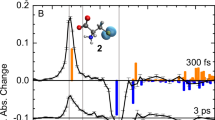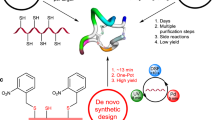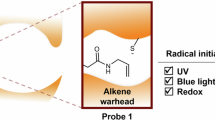Abstract
THE ability of hypophosphorous acid, or its salts, to reduce the disulphide bond in cystine, peptides and proteins to the corresponding thiols has been reported earlier1,2. The reaction is induced either by heating or by irradiation with ultra-violet light.
This is a preview of subscription content, access via your institution
Access options
Subscribe to this journal
Receive 51 print issues and online access
$199.00 per year
only $3.90 per issue
Buy this article
- Purchase on SpringerLink
- Instant access to full article PDF
Prices may be subject to local taxes which are calculated during checkout
Similar content being viewed by others
References
Swanepoel, O. A., and Louw, D. F., J. S. African Chem. Inst., 16, 31 (1963).
Swanepoel, O. A., J. S. African Chem. Inst., 16, 48 (1963).
Swanepoel, O. A., and Van Rensburg, N. J. J., Bull. Inst. Textile France (in the press).
Walling, C., and Rabinowitz, R., J. Amer. Chem. Soc., 81, 1243 (1959).
Swanepoel, O. A., and Van Rensburg, N. J. J. (in preparation).
Ellman, G. L., Arch. Biochem. Biophys., 82, 70 (1959).
Swanepoel, O. A., and Van Rensburg, N. J. J. (to be published).
Hettler, H., in Chromatographic Reviews, edit. by Lederer, M., 1, 225 (Elsevier Publ. Co., Amsterdam, 1959).
Author information
Authors and Affiliations
Rights and permissions
About this article
Cite this article
SWANEPOEL, O., VAN RENSBURG, N. Induction of the Cystine-hypophosphite Reaction by Radical Initiation. Nature 210, 199–200 (1966). https://doi.org/10.1038/210199a0
Issue date:
DOI: https://doi.org/10.1038/210199a0



